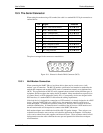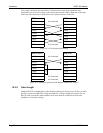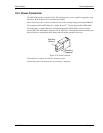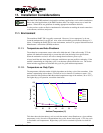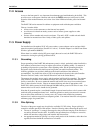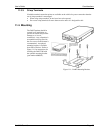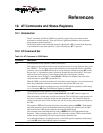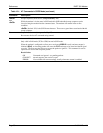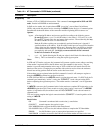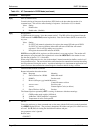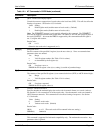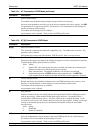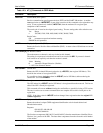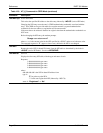
2110212 Rev 1.0 Page 97
References
12. AT Commands and Status Registers
12.1. Introduction
The AT commands available in CDPD mode generally operate in the same manner as their
equivalents in wireline modems. There are, however, significant differences in the data mode
escape sequence and dial operations.
The following tables list the commands grouped by their prefix. AT is assumed at the beginning
of all commands except where specified. A space following the “AT” is optional.
12.2. AT Command Set
Table 12-1:AT Commands in CDPD Mode
Command Description
+++
Time Dependent Escape sequence (TDES) (PAD modes).
This sequence is the standard wireline escape operation based on an escape character and a guard
time “GEEEG”. This sequence requires that transmit data to the modem be idle for a minimum
guard time (set in register S12) followed by an escape character (defined in register S2), usually
the plus sign “+”, repeated three times; followed by another idle guard time period. The escape
characters must not be spaced by more than the guard time or the sequence is broken.
The guard time can be disabled by setting S12=0. TDES itself is disabled if the value of the
escape character in register S2 is greater than 127.
When the TDES is received, the modem will: discard the escape characters, close and forward any
data in the packet buffer, transition to command state, and issue the OK result code.
As an alternative method of escaping data state, use the DTR signal in conjunction with a setting
of 1 or 2 using the &D (Data Terminal Ready Options) command.
AT+++
Time Independent Escape sequence (TIES) (PAD modes).
Unlike wireline operation, this sequence must include AT and the AT must be in uppercase.
While the modem is in data state in a PAD service mode (TCP or UDP) this escape sequence can
be issued, as a packet, to bring the modem into the command state. The modem will keep the
current session open, in the on-line condition, but will discard any partial packet received prior to
the TIES.
The sequence is AT+++ followed by the primary forwarding character (+WS64). Each time the
forwarding character is received, the modem checks the preceding five characters for the TIES.
This means that the TIES must fit within the current packet buffer length.
This command can be enabled/disabled by setting +WS60 (PAD Time Independent Escape
Sequence). When exchanging binary data it is very important to disable TIES to ensure that the
modem does not inadvertently pick up an escape sequence within the data.
As an alternative method of escaping data state, use the DTR signal in conjunction with setting 1
or 2 of the &D (Data Terminal Ready Options) command.



